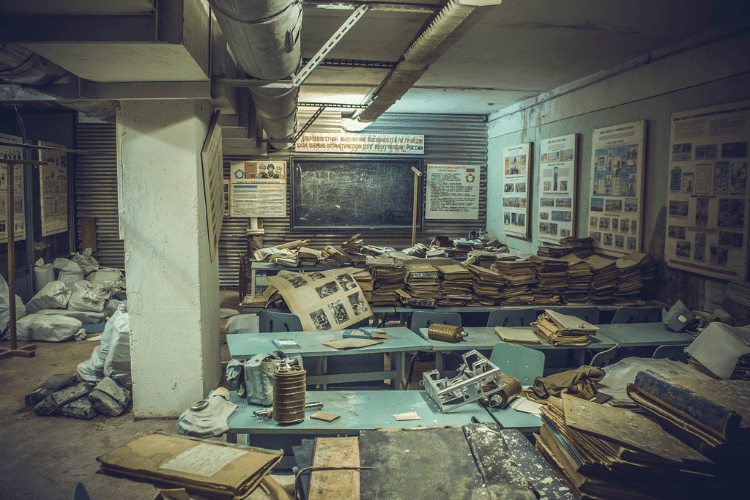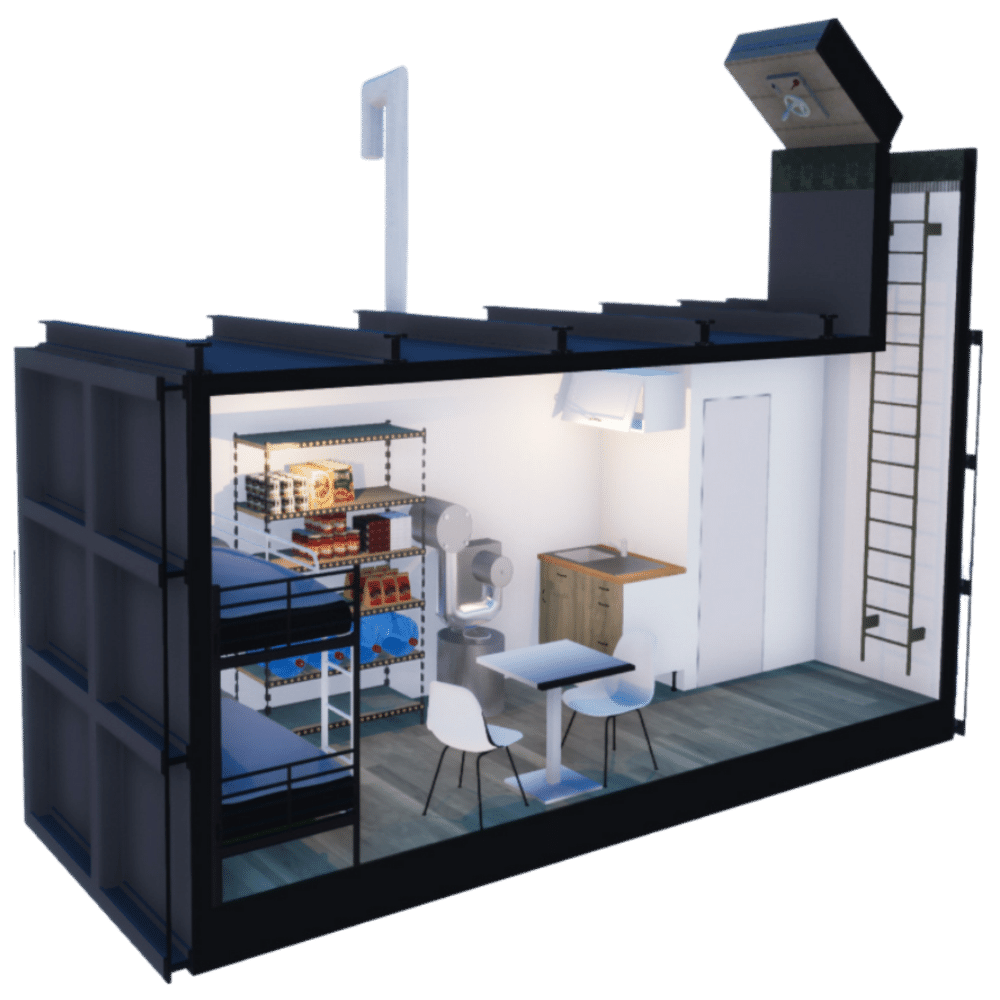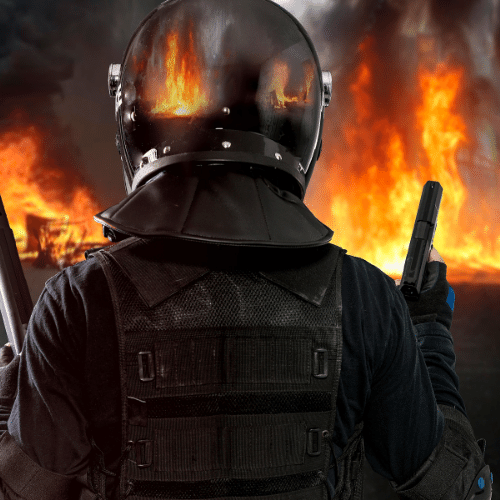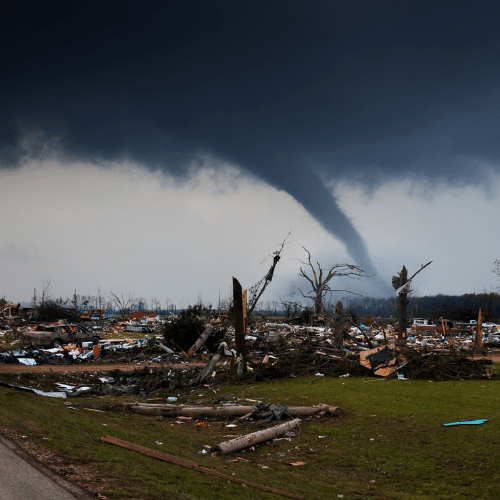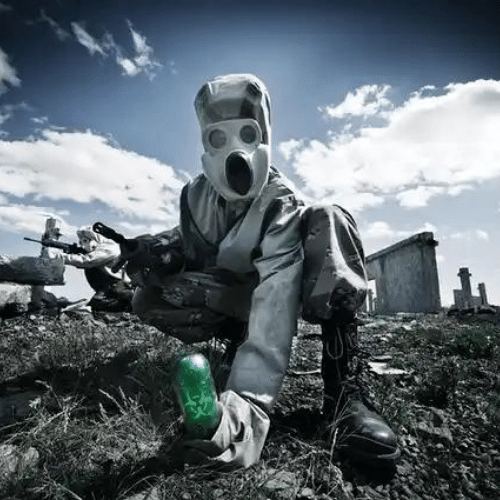Buying or building a bunker seems to be a general trend. Indeed, this type of investment only concerns rich people or a certain elite. Ordinary mortals can therefore afford today an effective means of protection at low cost. Therefore, many people wonder how long is it possible to live in a bunker?
As the latest global developments bring the famous doomsday clock very close to midnight, the requests for the construction of anti-atomic shelters therefore exploded. If our world encountered this apocalyptic situation and the only way to survive it was to live in a bunker, how long could we stay there?

As of January 2020, the doomsday clock has been set to 2 minutes to midnight…the closest we've ever been to an apocalypse!
Is it possible to live in a bunker?
Although it does not seem natural for a human to spend his entire existence underground, this eventuality must however be taken into account due to the current situation. If, for example, the Earth had truly become uninhabitable due to a nuclear runaway, and living on a underground shelter were the only chance to survive, how long could we stay there and what would be the quality of life?
Since the first humans on earth, caves and subterranean dwellings have always provided the safety, security and warmth needed for survival. But even then, we still had to venture to find important nutrients outside of the dwelling place.
For some researchers, living in a bunker is obvious in the medium term!
According different searches, living underground is obvious in the medium term! In addition, history clearly shows us that it is quite possible to live underground, but on condition of maintaining a balance in the primary needs of human beings. Getting around, eating, cleaning, socializing and exposing yourself to certain light spectra. The question is therefore whether the survival conditions are reproducible in a fallout shelter? The answer is yes " ! Today, technologies make this situation entirely possible and no longer seems to be a challenge.
The two most complex needs to satisfy are those of food and light. But with scientific breakthroughs in the field of aquaponics, it is therefore possible to be totally independent with their food. In addition, technologies related to optical fiber now make it possible to provide the necessary light underground and to simulate a luminosity specific to natural light.
Now that we know it's possible to live in a bunker for the long term, let's take a closer look at what the basic needs are and how best to prepare for them. In addition to the solutions offered on our website, you will therefore have to think about certain points that we will detail here.
Basic needs for living in a bunker
So what do you need to keep your family safe in an emergency? Although the bunker be the first basic element to put in place, here is what you should have in yours.
A suitable ventilation system
You won't survive long underground without oxygen. Installing a reliable ventilation system in your bunker should be your first priority. You'll need a system that will last for months and be able to withstand a storm or a bomb. Calculate how many people will be in the bunker and for approximately how long, then use this information to determine how much air you will need to recycle. Our bunkers are all delivered with an NBRC filtration system resistant to any situation and functional without electricity.
A light reproducing natural spectra
To satisfy this condition, the easiest way is to focus on lighting systems that reproduce the natural spectra of daylight. You will find them in many shops at prices between CHF 100.- and CHF 500.- for more advanced systems. If you are planning a larger budget for this position, there are also fiber optic solutions that will bring daylight into your bunker.
Lots of water is a no-brainer for living in a bunker
Water is more essential to survival than food. Theoretically, a person can live three days without water and three weeks without food. You never know how long you might be stuck in your bunker, so it's important to have a way to store plenty of water. Opt for jerry cans (barrel type) in order to build up sufficiently large reserves. To renew your drinking water independently, there are many more or less expensive solutions. The first and most basic solution is to boil the water before consuming it. This method is effective provided that the water is not, for example, radioactive. For a more important purification of your water, it will be necessary to count a budget of approximately CHF 3'000.- for a complete installation.
foodstuffs
Perishables have no place in a survival bunker! Instead, stock your shelves with canned foods, including dried fruits and vegetables, and sustainable snacks. Peanut butter, crackers, and canned tuna all have a long shelf life.
For the long term, you can opt for stand-alone hydroponic solutions and hunting.
A complete pharmacy!
Even in a fallout shelter, accidents can happen, so you'll want to be prepared for all eventualities. There will be no doctor to help treat your injuries or illnesses. So prepare a complete pharmacy to keep in your bunker. Also, be sure to monitor your stash and regularly replace anything nearing its expiration date.
A means of heating or appropriate clothing
Contrary to what one might think, it is not really cold in a bunker. Being below ground level in a relatively small space, the temperature there is generally livable. However, during cold seasons, the temperature may drop and you may still be cold. To keep warm, the best solution is to have appropriate clothing. Comfortable but warm clothes! Similarly, the bedding must be equipped with a means of maintaining body temperature.
In terms of a heating system, it is therefore useless! In the worst case, you can always divert the use of the kerosene cooking system that you will use to heat the living space.
Tools and weapons!
Over time, things that you will use every day will likely break with constant use. Beds, appliances, and lighting can all go haywire, and you'll need to find a way to fix them. Even though a toolbox can take up too much space, this one will always come in handy! This way you can always keep key items close at hand, such as a screwdriver or pliers. You can also invest in multi-tools for common use. Also, don't forget to include a wood saw in your toolbox. You will be able to cut wood and use it to make fire or constructions. Speaking of fire, although obvious, don't forget to also invest in a supply of matches and lighters.
In terms of armament, here is a list of the weapons preferred by survivalists:
- The sheathed dagger
- Aerosols and electric batons, urban survival weapons
- The crossbow or the bow for the wilderness
- Firearms for survival (pistol and ideally a shotgun)

Regardless of the choice of weapons, you will need to be adept at using them. This is why, it is strongly advised to practice with your weapons before being forced to do so by circumstances. For example, you could go to a shooting range to learn how to use your firearm.
A solution to generate electricity
Before thinking of a system to generate electricity, remember to build up a large reserve of batteries. Batteries will be your lifeline if your electricity fails! You will need it for flashlights and to use a battery operated radio for example.
With regard to the production of electricity, the means most used is that of the gasoline generator. You will find them at low prices and of robust design. For its connection and gas evacuation, ask your your fallout shelter builder to integrate its management into your construction. Depending on the configuration of the premises, it will also be possible to connect to the network or to use alternative methods such as solar panels or an installation of wind turbines.
A means of communication with the outside world
Nothing better than a simple radio! The choice of the ideal radio must be made according to two criteria: the most mobile the longest autonomy. The second element of communication to consider is that of the Walkie-Talkie. With the latter, you will be able to communicate with the people remaining in the shelter during your outings.
Your important documents
Keep copies of all your important documents in a safe in your shelter. Photo ID, passports, birth certificates and insurance forms are all essential to make your life easier later on. If your home is blown away by a tornado or other disaster, you'll also need proof that you were insured.
Our conclusion for living in a long-term bunker
We cannot predict what the world will be like after a major disaster. Being perfectly equipped and prepared for the worst is the only way to ensure your survival and that of those close to you!
Implementing an effective survival solution may also require significant funds to fund the entire project. On average, a complete solution with the construction of a 15 m2 shelter will cost between CHF 80,000.- and CHF 150,000.-. Be aware, however, that it is always possible to obtain financing to carry out your project. Moreover, we offer the services of the Lica company who can support you in this step as a credit professional in Switzerland.
Life in a long-term bunker is therefore something in preparation. Take information from a specialist in the construction of bunkers and plan the expenses to consider in your project. Also note that there is solutions to finance your entire project then with very affordable monthly payments.
